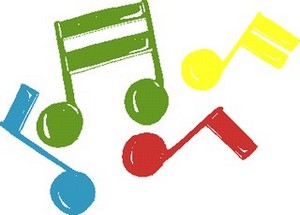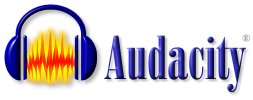28 Aug, 2007
 My music collection was a mess. I copied files from various album folders into artist folders and deleted a whole heap of files in the process. As a result I ended up with lots of empty folders which would have been painful to delete individually.
My music collection was a mess. I copied files from various album folders into artist folders and deleted a whole heap of files in the process. As a result I ended up with lots of empty folders which would have been painful to delete individually.
Another situation where it is useful is when you sort out your camera pictures, as you move the pictures out of the default date folders into your personalised folders.
I needed to find a script or an application that would do the job for me. I wanted it to be simple, safe and reliable. JonasJohn came to the rescue with a little program called “Remove Empty Directories.”
RED scans your computer for empty folders and gives you the option to delete them. It is highly customisable so you can have it ignore specific files and folders. It does more than what I needed, but the extra functionality equates to safer operation.
You will need to be careful not to run this program over your “Windows” or “Program Files” directories as some programs require specific empty folders to work. I would advise you to run it only in folders which have your own documents in them, such as “My Documents” or “My Pictures”.
It’s small and free, and is available from jonasjohn|DE.
14 Aug, 2007
Difficulty Rating:
 The standard Windows startup sound is shorter that it’s load time, making it a less than ideal indicator of when your machine is ready to use. If you time your startup and make a sound file which is of a similar length to the load time, you are able to use it as an indicator of when your machine is ready for action, giving the start-up sound a real purpose.
The standard Windows startup sound is shorter that it’s load time, making it a less than ideal indicator of when your machine is ready to use. If you time your startup and make a sound file which is of a similar length to the load time, you are able to use it as an indicator of when your machine is ready for action, giving the start-up sound a real purpose.
This time varies greatly from computer to computer, and changes according to what operating system you are using and what programs and tasks you have running at startup.
Even if you do not want a long startup sound, it is worth placing silence before the sound you currently use so that the startup sound comes to an end at the right time.
Vista has a predefined startup sound which cannot be changed. This is part of their branding. You may want to get around this by changing the login sound instead of the startup sound, though this will not be covered in the article.
This article will show you how to edit or change your current Windows XP startup sound so that you can use it as an indicator of when your machine is ready to use, or to add a personalised touch to your computer. It can also be a nice wakeup call when you get into work as music can lift your spirits and get you in the right frame of mind.
Read the rest of this entry »
6 Aug, 2007
 The open-source community has done it again with another spectacular piece of software. Audacity is an audio editing/recording software package for your computer which can be as simple or complex as you would like.
The open-source community has done it again with another spectacular piece of software. Audacity is an audio editing/recording software package for your computer which can be as simple or complex as you would like.
At one stage of my life, I was right into using fancy audio software, using Cakewalk, Vegas and Pro Tools to record bands in my loft. I would then use Sound Forge to edit the individual tracks, spending hours on each song to get it right for a release. All of these pieces of software are good, but they are not cheap, costing much more than they really should.
Times have changed, and now all I want is a program that is easy to use and that works well. Audacity is the program for me, as not only will it do everything I want from an audio editor, it is free.
It can as easy to use as loading it up and pressing the record button to record either sounds you hear on your computer, or audio from an external source. It is an ideal application for converting your vinyl to a digital format. Windows sound recorder looks pathetic next to Audacity.
Audacity can also be used for more advanced tasks such as multi-track recording, allowing you to record multiple tracks at once. There are a huge range of special effects you can add to your tracks which are all easy to use and understand. It even shows wave forms as they are created in real time.
Over the coming days, I will be using Audacity in many of the How-To articles as it is the best tool to use for what we are trying to achieve.
The program itself is very small and runs very fast. Available from SourceForge.
18 Jul, 2007

For a long time, Adobe Acrobat Writer was the only way to make PDF files. This was expensive and only worth buying if you wanted to make bulk PDF documents. It is important to use PDF files where possible, because somewhere down the line, they became a standard and they give your documents that professional touch. The documents are also compressed making emailing of them a little quicker.
PDF Creator is another SourceForge project which allows you to make PDF files for free. This has also been around for a number of years now but is not all that well known.
Once you install it, to make a PDF file from any number of document creation programs, such as Microsofts Office Suite, select “Print” from the “File Menu” and select the PDF printer. This will spit you out a nice compatible PDF file, or a number of other tasks such as sending it to someone via email.
There are many options allowing you to make the document look just as you would like it. This is an essential piece of software that every Windows Machine should not be without.
Download it from SourceForge.
25 Jun, 2007

It is always nice to sit back to listen to an album of your favourite band, with a bit of moving visual stimulation added to set the mood. The visualisations that come with Windows Media Player which have not been updated in years, just don’t cut it. There has been one visualisation program which has stood out over the years.
Introducing R4 from Rabidhamster. The effects and colours of R4 are stunning and there are enough transition effects to always use this program as you will always see new combinations, to keep it interesting. The music detection is really solid, you can notice how R4 responds to a drum beats. It is highly configurable and works really well over multiple monitors as you can see from the screenshots. The package runs really smoothly and you don’t need a really fancy video card.
R4 was originally released as a Winamp plug-in, with the addition of a stand alone program to work with other media players. With other players becoming more and more popular over Winamp, this allows it to remain relevant as it will detect sound and music from any media player we have on our computer. There is a minor scroller on visualisations saying that this version is not for commercial use. It is subtle. The good thing about this scroller is that it shows R4 was designed for commercial endeavours such as night clubs.
I installed this in Vista and a few things worked differently to how they did in XP. I was able to run programs over the top of R4 and always have the Start Bar visible. It was working very much as a screen background apart from hidden desktop icons. R4 would be a reasonable Dreamscene replacement if you are not an Ultimate user.

Available for free from rabidhamster.org.
 My music collection was a mess. I copied files from various album folders into artist folders and deleted a whole heap of files in the process. As a result I ended up with lots of empty folders which would have been painful to delete individually.
My music collection was a mess. I copied files from various album folders into artist folders and deleted a whole heap of files in the process. As a result I ended up with lots of empty folders which would have been painful to delete individually.
 The standard Windows startup sound is shorter that it’s load time, making it a less than ideal indicator of when your machine is ready to use. If you time your startup and make a sound file which is of a similar length to the load time, you are able to use it as an indicator of when your machine is ready for action, giving the start-up sound a real purpose.
The standard Windows startup sound is shorter that it’s load time, making it a less than ideal indicator of when your machine is ready to use. If you time your startup and make a sound file which is of a similar length to the load time, you are able to use it as an indicator of when your machine is ready for action, giving the start-up sound a real purpose. The open-source community has done it again with another spectacular piece of software. Audacity is an audio editing/recording software package for your computer which can be as simple or complex as you would like.
The open-source community has done it again with another spectacular piece of software. Audacity is an audio editing/recording software package for your computer which can be as simple or complex as you would like.


